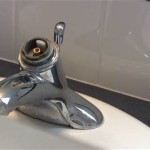How To Raise Bathroom Sink Plumbing
Raising bathroom sink plumbing is a common home improvement project that can be undertaken by homeowners with moderate DIY skills. This project is often necessary when remodeling a bathroom, replacing a vanity with a taller one, or simply to improve the ergonomics of the sink. This article provides a step-by-step guide on how to raise bathroom sink plumbing safely and effectively.
1. Gathering Materials and Tools
Before starting any plumbing project, it is essential to gather the necessary materials and tools. The following items will be required for raising bathroom sink plumbing:
- New P-trap: This U-shaped pipe is essential for preventing sewer gases from entering the home. A longer P-trap will be needed to accommodate the increased height of the sink.
- Extension pipes: These are used to connect the new P-trap to the existing drain line. The length required will depend on the height difference between the old and new sink.
- Pipe thread sealant tape or compound: This helps to create a watertight seal between the pipe threads.
- Adjustable wrench: Used to tighten and loosen pipe connections.
- Channel-lock pliers: Useful for gripping and tightening nuts and bolts.
- Level: Ensures the sink is perfectly level.
- Utility knife: For cutting pipe insulation or other materials.
- Safety glasses: Protect your eyes from debris.
- Work gloves: Protect your hands from sharp edges or potential leaks.
2. Shutting Off the Water Supply
The first step in raising bathroom sink plumbing is to shut off the water supply. This is crucial to prevent flooding and potential damage to the bathroom. Locate the shut-off valve for the bathroom sink, usually found under the sink or on the wall behind it. Turn the valve clockwise to shut off the water flow. If the valve is old or difficult to turn, use a pipe wrench to assist.
3. Disconnecting the Sink Plumbing
Once the water supply is shut off, you can disconnect the sink plumbing. This involves disconnecting the water supply lines, drain pipe, and the overflow pipe (if applicable). Start by disconnecting the water supply lines by turning the nuts counterclockwise. Then, disconnect the drain pipe by loosening the nut connecting it to the P-trap. Finally, disconnect the overflow pipe if present, following the same process as the drain pipe.
4. Raising the Drain Pipe
The next step is to raise the drain pipe. This involves disconnecting the existing P-trap and replacing it with a longer one. Start by disconnecting the existing P-trap from the drain line and the sink drain. Then, install the new P-trap, making sure it is securely fastened to both the drain line and the sink drain using pipe thread sealant tape or compound. Once the new P-trap is installed, attach the extension pipes to connect it to the drain line. Use pipe thread sealant tape or compound to secure the connections. Ensure the extension pipes are securely connected to the existing drain line and the new P-trap using adjustable wrenches or channel-lock pliers.
5. Raising the Water Supply Lines
Now, you need to raise the water supply lines to match the new height of the sink. Disconnect the existing water supply lines from the shut-off valve and the sink. Then, attach extension pipes to the existing supply lines. These extension pipes should be long enough to reach the new sink. Secure the connections between the extension pipes and the existing supply lines using pipe thread sealant tape or compound and tighten them with adjustable wrenches. Finally, connect the raised water supply lines to the new sink.
6. Testing for Leaks
After connecting the new plumbing connections, it is essential to test for leaks. Turn the water supply back on slowly and carefully check all connections for any signs of leaks. If you find any leaks, tighten the connections or re-apply pipe thread sealant tape or compound. If the leaks persist, you may need to consult a professional plumber.
7. Installing the New Sink
Once all the plumbing connections are secure and leak-free, you can install the new sink. Follow the manufacturer's instructions for installation, which typically involves attaching the sink to the countertop, connecting the drain pipe to the sink drain, and attaching the water supply lines to the sink valves. Ensure the sink is level using a level before securing it.
How To Install Bathroom Sink Drain Queen Bee Of Honey Dos

Raising A Bathroom Vanity Diy Oak Hill Home Solutions
I Closed My Sink Drain Stopper And Now It Won T Open Again Is There Any Way That Can Repair This Without Hiring A Plumber Quora

How To Raise Up A Short Vanity Remodelaholic

How To Easily Make A Bathroom Countertop Taller Noting Grace

How To Replace And Install A Bathroom Sink

How Do I Raise A Bathroom Vanity Hometalk

A New Laundry Sink In The Basement Bathroom Our Old House Blog

Raising A Too Low Trap Arm
Related Posts







